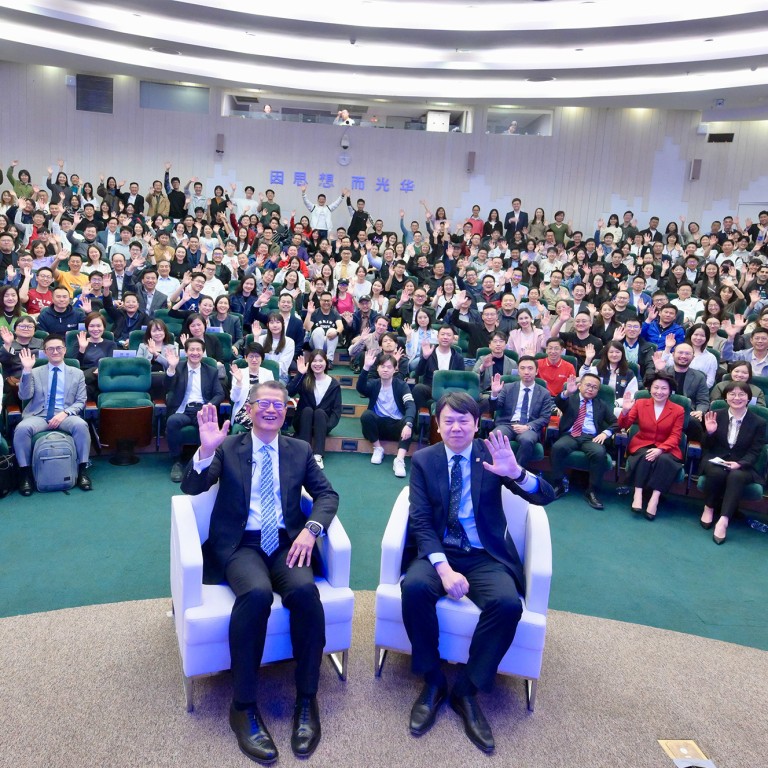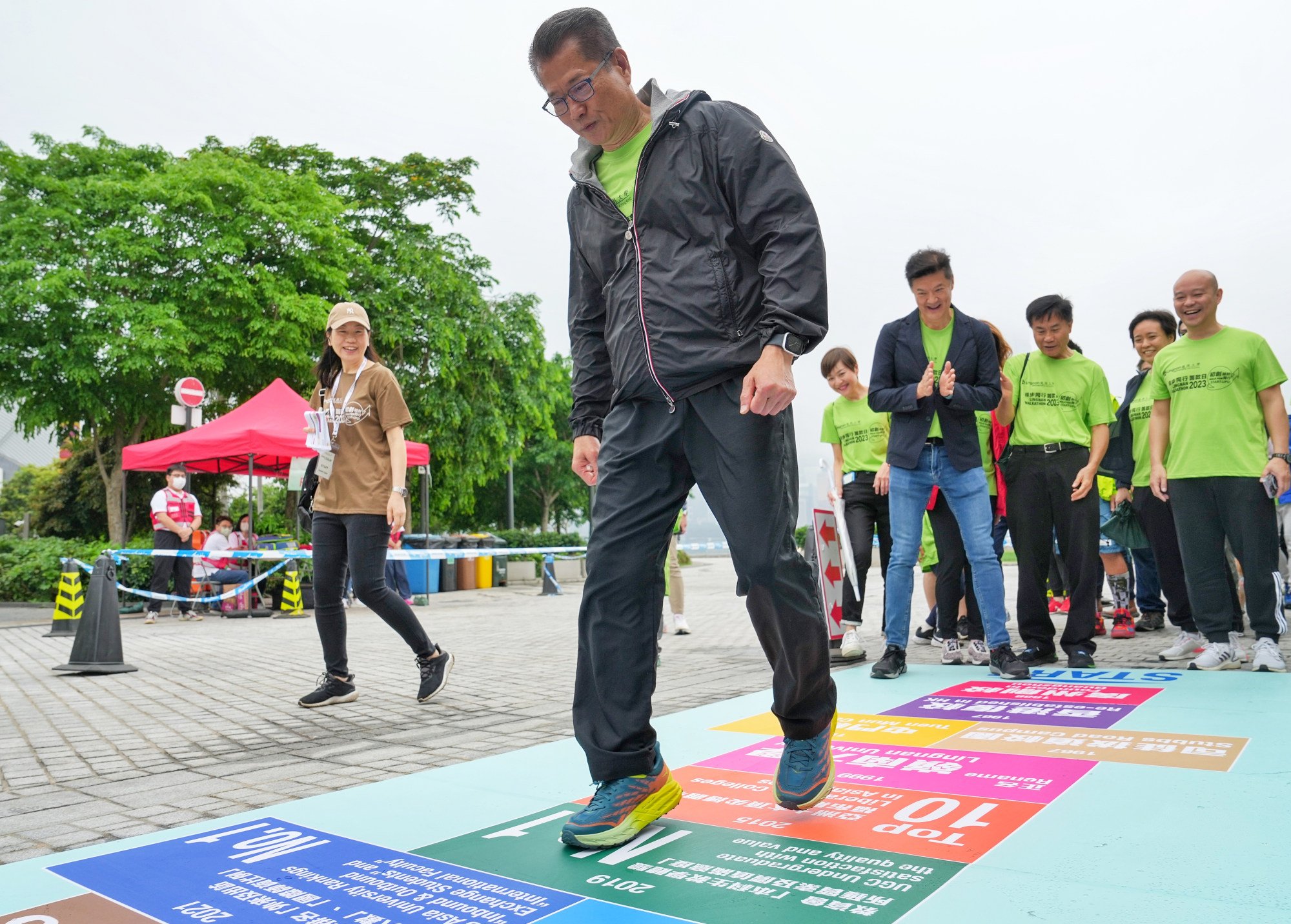
Hong Kong now in ‘golden window for development’ with quick revival of economic activities, finance chief Paul Chan says
- Financial secretary recalls recent trip to mainland where he says university students are eager to forge careers in city
- He touts overall ‘positive atmosphere’, pointing to accelerated pace of economic activities and return of city’s transport edge in global supply chain
Hong Kong is now in a “golden window for development” as economic activities are recovering at an accelerated pace, according to the city’s finance minister.

He also pointed to his recent four-day trip to Beijing, where he attended meetings with various mainland Chinese departments and visited local universities to encourage students to explore career opportunities in the city.
Chan said he noted that even though the Covid-19 pandemic had hindered exchanges between Hong Kong and the mainland, various industry actors across the border had closely tracked developments in the city to offer support, explore new measures and optimise existing ties.
Chan added that the meetings had given his team a better understanding of the economic and financial conditions on the mainland, while allowing them to learn more about latest developments and develop ideas for relevant policies.
The finance chief recalled, in particular, his visit to Peking University, where he met more than 400 people and gave a speech on Hong Kong’s appeal. He said the exchange session received a positive response as all seats in the lecture hall were filled, while the atmosphere was “relaxed and enthusiastic”.
“Everyone was curious about the opportunities in Hong Kong and wanted to know more about working here,” Chan added.
He said he shared with students the beauty of the city’s countryside, its rich and diverse arts and culture scene, as well as more than 200 restaurants recommended by Michelin.
“From the interaction in the question and answer session, I deeply felt the students’ love for Hong Kong, as well as their strong interest and longing for developing their careers in Hong Kong.”
Hong Kong’s budding student entrepreneurs show off products at weekend bazaar
‘Mild’ growth for Hong Kong in first quarter amid upbeat outlook: Paul Chan
Separately, on a fundraising walk organised by Lingnan University on Sunday, Chan also said in a speech that Hong Kong could develop into a world-leading international green technology and financial centre. The city had raised more than US$80 billion (HK$628 billion) in green debt last year, with more than 100 green tech companies in the Cyberport hub, he said.
He encouraged students at the campus to set up businesses in the city, saying there were various funds for start-ups and a market of 80 million people in the bay area.

